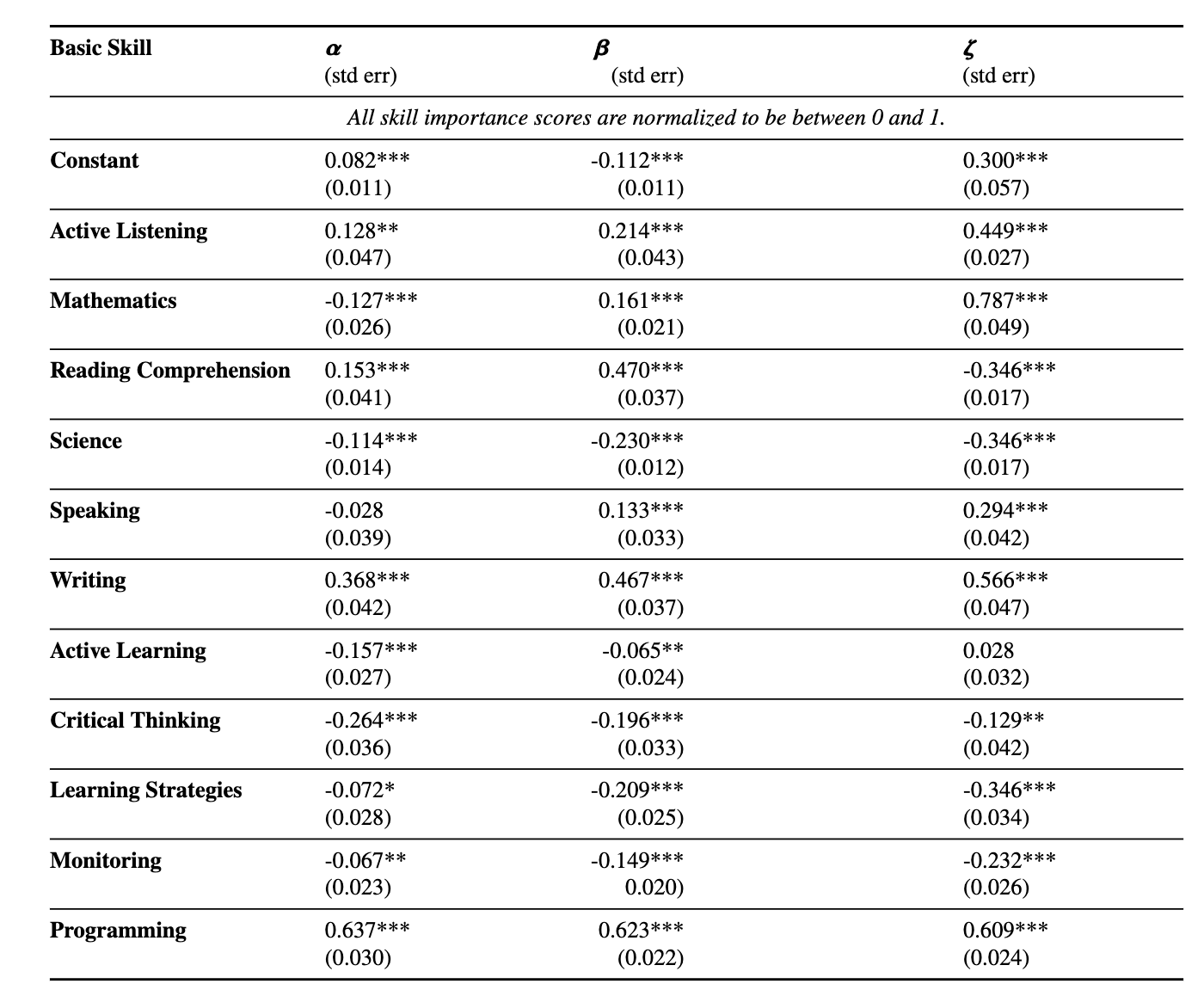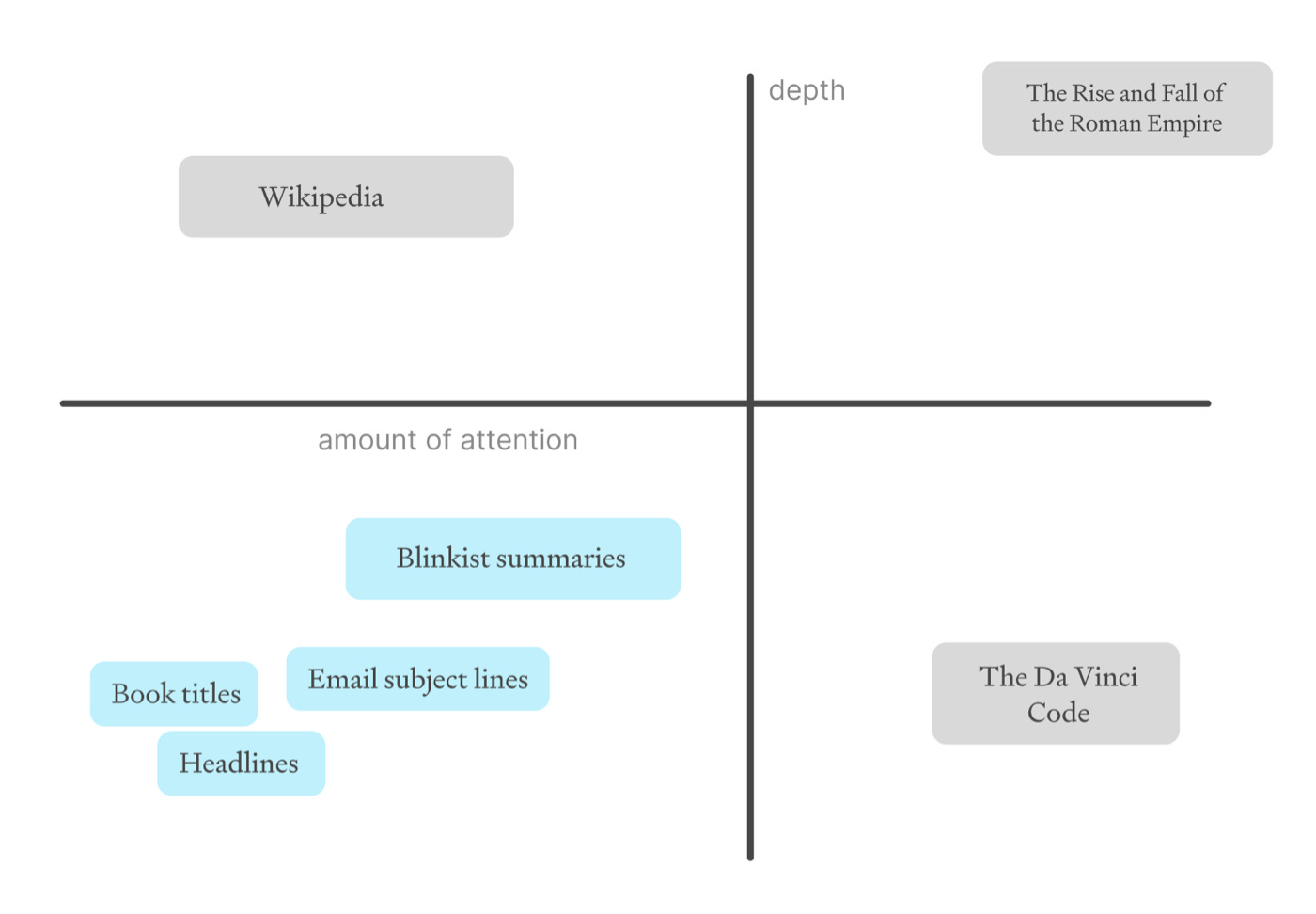Upskilling in the AI Age
AI as a general-purpose technology; job loss versus upskilling; and a solution to creative drudgery
Who will benefit from AI? Who will suffer?
The questions are at the root of much of the unease and anxiety surrounding AI.
Will my job disappear? Will all jobs disappear? How can I earn a living if my job is affected? Or, can I actually increase my income by using AI? And if so, what do I need to learn?
We’re probably too early in the development of AI to make any reliable predictions, but the contours of some answers are beginning to sharpen.
Writing for Google, Technology & Society Visiting Fellow Andrew McAfee authored a 22 page report (and a brief overview) on the economic impact of AI, and specifically why AI is a “general-purpose technology” and what that means at a macro scale.
General-purpose technology
General-purpose technologies have three primary characteristics:
Rapid Improvement
Pervasiveness
Complementary Innovation
McAfee argues that AI meets each criteria.
Rapid Improvement
Citing dramatically better answers to simple prompts, improved problem-solving capability, and vastly increased “context windows” (40x prompt capacity increase in 3 years), he makes it easy to see that AI is improving very, very rapidly. Much more rapidly that past general-purpose technologies, like the steam engine, electricity, and even computers.
Pervasiveness
Recent research found that for around 80% of all workers in the US economy at least 10% of their tasks could be done twice as fast with with no loss in quality using AI. That is, to put it mildly, absolutely nuts.
Complementary Innovation
McAfee’s examples for complementary innovation are more qualitative (robotics; using AI to speed up survey research), but this is likely due to just how early we are in the adoption curve of generative AI.
If a technology possesses three key characteristics — rapid improvement, pervasiveness, and complementary innovation — it’s likely to have a large, positive, economy-wide impact on productivity growth.
Much of McAfee’s report focuses on the overall benefits of general-purpose technologies, in terms of economic growth, life expectancy, and so on. The message is clear (and maybe a little self-serving given Google’s interest in the field): AI will improve standards of living.
That will be cold comfort to people whose professions disappear, like the coal miners told to ‘just learn to code’.
Who are the coal miners of AI?
Who will be affected?
In GPTs are GPTs: An Early Look at the Labor Market Impact Potential of Large Language Models (currently a working paper on arxiv), Tyna Eloundou et al took a stab at answering that question. With a combination of human raters and GPT raters, they evaluated 1,016 occupations and their respective 19,265 tasks and 2,087 detailed work activities (DWA) identified in the ONET database.
Some of their findings:
“[W]e estimate that 80% of workers belong to an occupation with at least 10% of its tasks exposed to LLMs, while 19% of workers are in an occupation where over half of its tasks are labeled as exposed.”
“While some discrepancies exist, both human and GPT-4 assessments indicate that higher wage occupations tend to be more exposed to LLMs. Additionally, numerous lower wage occupations demonstrate high exposure based on our rubric.”
“Our findings indicate that the importance of science and critical thinking skills are strongly negatively associated with exposure, suggesting that occupations requiring these skills are less likely to be impacted by current LLMs. Conversely, programming and writing skills show a strong positive association with exposure, implying that occupations involving these skills are more susceptible to being influenced by LLMs”
Occupations with the highest exposure according to LLMs. (Note: “Human” refers to ratings made by humans; “Model” refers to ratings made by GPTs.). Source: Eloundou et al 2023.
Regression of occupation-level, human-annotated exposure to GPTs on skill importance for each skill in the O*NET Basic skills category, plus the programming skill. Source: Eloundou et al 2023.
The key takeaways here:
Writers and programmers are the most exposed to LLMs.
Higher wage jobs are more exposed than lower wage jobs.
Scientific skills and critical thinking skills are among the least exposed.
Exposure and opportunity
However, it’s important to note that exposure does not equal job loss. McAfee gives a several examples of exposed professions seeing increases in productivity and speed with no lose in quality:
Coders [u]sing an AI pair programmer completed programming tasks 56% faster
Professional writers [u]sing a generative AI chatbot completed occupation-specic writing tasks 37% faster with signicantly higher quality
Every has a series called What AI Can Actually Do and Some Things We Know that ties into these ideas.
In What Can Language Models Actually Do? Dan Shipper writes about the three things language models do, fundamentally:
Language models transform text in the following ways:
Compression: They compress a big prompt into a short response.
Expansion: They expand a short prompt into a long response.
Translation: They convert a prompt in one form into a response in another form.
At heart, each of these three types of transformation involve remixing. Compression, or summarizing, is a particularly potent use-case for AI, and one that can remove a lot of the drudgery from creative work.
Comprehensive Compression. Source: Dan Shipper for Chain of Thought
Dan writes:
Comprehensive compressions are the McDonald’s french fries of the intellectual landscape: ubiquitous, tasty, cheap, and low status.
But this kind of summary is an important output of creative work because it respects the fundamentally limited attention of human beings.
Upskilling
AI can go beyond increasing the speed of creative schleps. It can also improve quality and decrease training time.
McAfee gives several examples of successful upskilling:
Management consultants performing in the boom half of their cohort saw a 43% improvement when using a generative AI tool; those in the top half only improved by 17%
Professional writers initial performance inequalities were more than 50% erased once low- and high-performing cohorts used a generative AI chatbot
Law students with the lowest performance improved their final exam scores by 45 percentiles when using a generative AI system
I have to admit that as someone who makes a living writing, I get a little prickly thinking about rank beginners approaching a high skill level without putting in years of effort. But I know that’s short sighted. Upskilling benefits the expert, as well, though perhaps in different ways. It can, for example, provide disproportionate benefit to someone who knows from experience where the points of greatest leverage are in a given profession or type of work.
What might this look like in practice?
AI’s summarization capability can help people develop expertise quickly. Beginners can rapidly transform into experts using AI-assisted memetic analysis to quickly synthesize experiences and develop intuition that traditionally takes years.
In How to Become an Expert at Anything With AI, Michael Taylor explains memetic analysis using James Clear’s process for developing the title to his book Atomic Habits. Clear looked for patterns in the titles of successful self-help books, distilled his results into a formula, and applied the formula to his topic.
Taylor then goes on to provide a formula for doing similar work with AI:
scrape data from a source
prompt for title templates
use AI to help make a creative decisions
“Nearly every creative decision can be better informed with this method,” Taylor says.




